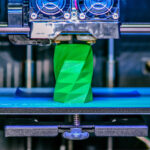
You’ve probably heard about optic fibre products when people talk about cable TV systems, Internet connection or about telephone systems. The optic fibre lines are made of optically pure glass and they are as thin as a human hair. The optic fibre products have capability to deliver digital information through long distances. They are also used in mechanical engineering inspections and for medical imaging. If you haven’t worked with optic fibre products, then you will be amazed what these products can offer. The best thing is that with all the enhancements, simplification and improvements of the optic fibre products, the basic technology has not changed. Here are several things you should know when it comes to optic fibre products.
The optic fibre products and systems no longer require continuous maintenance like it was the case with older models. Also, optic fibre products do not require extensive training for installation, design or/and troubleshoot. With different systems available today, the optic fibre cable can work simply by using the information placed in the box. More complex systems require experience and training. With the optic fibre products you don’t have to be a technician or an engineer. When it comes to troubleshooting and installation, there are simple connectors, and most of the reception/transmission systems are self-diagnostic and even self-adjusting.
The optic fibre products are not expensive investment. The optic fibre system may need a receiver and a transmitter, however it will not need surge protection. At the end, your general cost for the optic fibre cable will be about 20% less than using coaxial cable. Since the optic fibre cable can run in the same canal with high voltage, you will save a lot of money. Also, you should consider about both long-term and short-term expenses. Usually, the fibre optic products cost more, but will definitely save you a fortune in the long run.
The optic fibre products are not hard to work with and are not as fragile as it seems. The fact is that the optic fibre cable is more flexible and stronger than the coaxial cable, because almost 98% of the fibre cable is designed for strength compared to the coaxial cable where this percent is less than 5%. Furthermore, the optic fibre cables are made from pure glass which is strong and flexible. Thanks to the optic fibre cables, today we are able to transmit up to 64 real-time and full resolution images and videos in the same optic fibre at the same time, send 64 of quality stereo channels and 64 control signals or data.





















